Editor's note: On the 10th anniversary of the Belt and Road Initiative (BRI), let's take the railways in BRI partner countries and explore the projects as well as the local sights and sounds. In this article of the "Railways Along the Belt and Road" series, we focus on the brand new Hungary-Serbia Railway and how projects along the route have made daily life in the Balkan region of Europe better.

Hungary-Serbia Railway /Shen Shiwei and Huang Ruiqi
Hungary-Serbia Railway /Shen Shiwei and Huang Ruiqi
Train travel in the Balkan region in Europe is no longer an exhausting journey, mainly because the century-old railway between Budapest, the capital of Hungary, and Seria's capital of Belgrade is being reinvigorated with Chinese high-speed technology, which also complies with European interoperability technical standards.
A century ago, the route was once used by the famous Orient Express, with main terminal stations in Paris and Istanbul and branches extending service to Athens, Brussels and London. But the old rail line, a key access route to the Balkans and Greece, had not been redeveloped for 40 years. Today, the brand new high-speed railway will be the most modern rail route in the Balkan region in Europe.

Hungary-Serbia Railway is reviving with Chinese high-speed techonology, which also complies with European interoperability technical standards. /CCTV
Hungary-Serbia Railway is reviving with Chinese high-speed techonology, which also complies with European interoperability technical standards. /CCTV
The upgrade of the Hungary-Serbia Railway spans a total of 341.7 kilometers, with 183.1 kilometers in Serbia and 158.6 kilometers in Hungary. Once in full operation, the project will reduce travel time between the capitals of the two countries from 8 hours to 3 hours.
Since the Belgrade-Novi Sad section was put into operation in March 2022, the 80-kilometer journey has been carrying passengers at a speed of up to 200 km per hour, up from less than 50 km per hour before.
A train runs on a bridge of the Belgrade-Novi Sad section of the Hungary-Serbia Railway. /Xinhua
A train runs on a bridge of the Belgrade-Novi Sad section of the Hungary-Serbia Railway. /Xinhua
In the Balkan region, it's not only the century-old railway that is being upgraded under the Belt and Road Initiative. Known as the "pride of Serbia", the country's century-old Smederevo Steel Mill has revived from the brink of bankruptcy and a severe situation where 5,000 employees were facing unemployment.
Everything has changed since China's HeSteel Group (HBIS) invested 46 million euros ($51.9 million) and established HBIS Serbia in 2016. The upgraded factory started to expand production and improve its environmental performance. Five years after the establishment of HBIS Serbia, the steel mill has become the country's second-biggest exporter. The revived factory provides good living and working conditions for many families, gives children the opportunity to go to school and young people do not have to leave their hometown and seek job opportunities in other cities or even countries.
Serbia's century-old Smederevo Steel Mill has been revived with Chinese investment. A steel-making workshop at the HBIS Serbia in Smederevo, Serbia, May 17, 2021. /Xinhua
Serbia's century-old Smederevo Steel Mill has been revived with Chinese investment. A steel-making workshop at the HBIS Serbia in Smederevo, Serbia, May 17, 2021. /Xinhua
In the Balkan region, it's no longer a complicated journey of driving from Croatia's mainland part to tour around Dubrovnik to see the Game of Thrones filming locations. Thanks to the 2.4-km-long Peljesac Bridge constructed by a Chinese consortium led by the China Road and Bridge Corporation (CRBC), it's for the first time that the two swaths of Croatian coastline divided by a small stretch of Bosnia and Herzegovina's territory got connected.

Fireworks display celebrating the inauguration of Peljesac Bridge, which connects two swaths of the Croatian coastline that are divided by a small stretch of Bosnia and Herzegovina's territory, July 26, 2022. /Xinhua
Fireworks display celebrating the inauguration of Peljesac Bridge, which connects two swaths of the Croatian coastline that are divided by a small stretch of Bosnia and Herzegovina's territory, July 26, 2022. /Xinhua
Co-financed by the EU and built by China, Peljesac Bridge is a reflection of cooperation between China and the EU under the Belt and Road Initiative, in which Chinese companies won the public tender in tough competition and followed EU standards. Croatia is now benefiting from the country's largest-ever infrastructure project.
EU funded and China built Croatia's Peljesac Bridge that connects two swaths of the Croatian coastline that are divided by a small stretch of Bosnia and Herzegovina's territory. /CGTN
EU funded and China built Croatia's Peljesac Bridge that connects two swaths of the Croatian coastline that are divided by a small stretch of Bosnia and Herzegovina's territory. /CGTN
More BRI cooperation and projects have brought benefits to local people and the country's economic development.
Bosnia and Herzegovina (BiH) faces the same coal dilemma as many countries around the world. For some, fossil fuels are an environmental killer; for others, they are a reliable source of electricity and heating. The new Chinese-built Stanari Thermal Power Plant has not only met the strict European environmental regulations and standards but also addressed the air pollution caused by a conventional way of burning low-quality coal. More importantly, residents there can say with pride that their average salary is number one in Bosnia and Herzegovina.
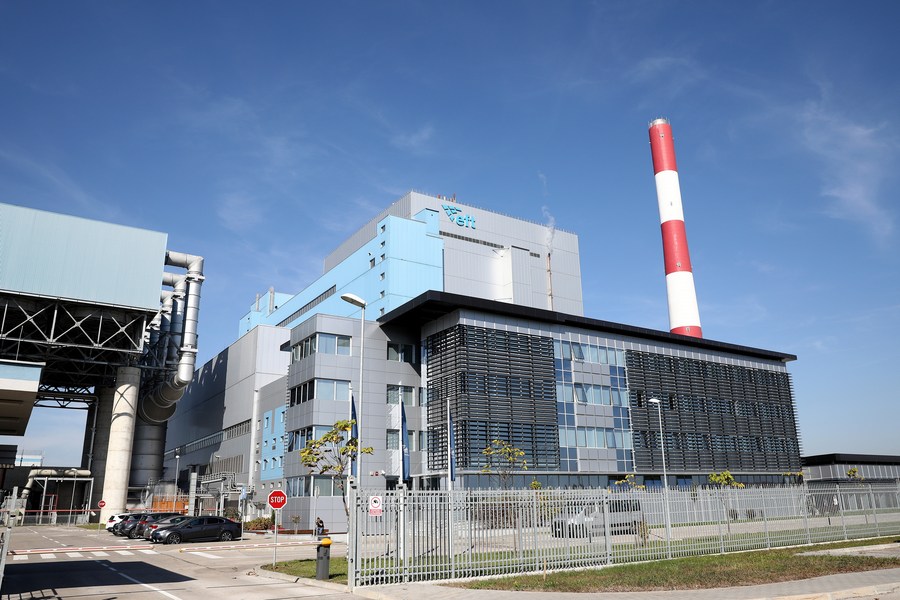
The Stanari Thermal Power Plant in Stanari, northern Bosnia and Herzegovina (BiH). /Xinhua
The Stanari Thermal Power Plant in Stanari, northern Bosnia and Herzegovina (BiH). /Xinhua
With a Chinese-built section of highway linking Montenegro's underdeveloped north with the capital Podgorica and the tourist havens in the south, people can forever say goodbye to the worries of driving on the dangerous old roads.
A section of the Bar-Boljare highway, constructed by a Chinese company, would connect mountainous Montenegro with the European highway network and boost the economy. /Xinhua
A section of the Bar-Boljare highway, constructed by a Chinese company, would connect mountainous Montenegro with the European highway network and boost the economy. /Xinhua
Construction of the first Chinese vaccine factory in Europe kicked off in Belgrade. China's battery giant CATL officially launched a Hungarian plant with a total investment of 7.34 billion euros ($7.28 billion) to support Europe's green transition and electric vehicle development. It's among the five largest greenfield investments made in Europe in the last 10 years and the largest investment ever in Hungary. All these BRI projects have made a difference in people's lives.
By 2025, when the Hungary-Serbia railway project is scheduled for full operation, it will be a game changer in enhancing connectivity between the Balkan region and other parts of Europe and Asia.